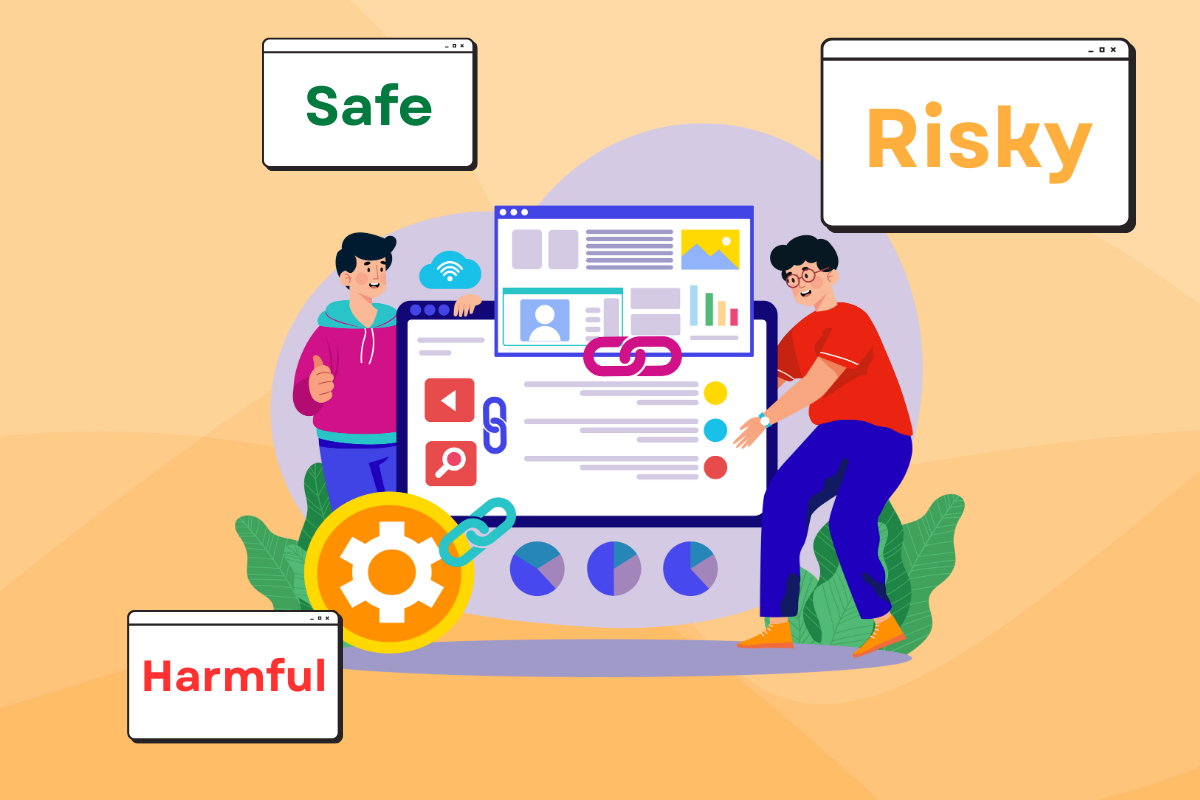Backlinks are one of the most essential and powerful signals that Google uses to rank any website. There is a study to back this.
According to a Backlinko study, a webpage that ranks 1st on Google has an average of 3.8x more backlinks than webpages that pages that rank No.2 to No.10.
These backlinks serve as a trust signal, a recommendation, or, in essence, a vote of confidence.
It tells search engines,” your website is credible, valuable, and is worth checking out.” The more quality backlinks your website has, the more likely it is to rank higher in SERPs.
Simply put, backlinks are the main reason why some webpages get more traffic than others.
Undoubtedly, backlinks are important, but not all backlinks are good. Some backlinks help you rank higher, while some do nothing, and some backlinks can even hurt your website ranking in the long run. Therefore, it is essential to understand the types of backlinks and on which one you should focus – safe, grey-hat, or harmful. If you build backlinks without understanding it, you could waste your valuable time, money, and invite Google penalties.
In this blog, you will learn about the types of backlinks (safe, risky, and harmful). It will help you build the backlinks that help you rank higher in Google’s search results pages.
So, without further ado, let’s get started.
What are Backlinks?
Backlinks are links that your website gets from other websites. They are called backlinks because they “link back” to your site. Backlinks are also known as incoming or outbound links. It plays a major role in a website’s E-E-A-T (Experience, Expertise, Authoritativeness, and Trustworthiness), which is a key factor in how Google analyze content.
For example, if you run an online clothing store (Site B) and a popular fashion blog (Site A) links to one of your pages, that link becomes the backlink for your website. It not only brings more prospects to your store but also tells search engines that your website is credible and reputable.

Here, if website A links -> website B, it means website B has earned a backlink from Website A.
Backlinks help search engines understand that your website is useful or trustworthy. If trusted websites like Forbes.com are linking to your site, it means your content has value. That’s why Google treat them as a trust signal.
What Makes a Backlink Valuable?
A high-quality backlink will boost your ranking more than many low-quality backlinks. According to John Muller, the quantity of backlinks does not matter, but the quality of backlinks makes all the difference. He said this on Google SEO Office Hours.
Simply put, not all backlinks are equal; some can boost your website’s SEO while others may actually harm your rankings or reputation.
The following criteria define a high-quality backlink.
- Relevance of linking page – Your website should get backlinks from sites that are related to your topic or industry. If you run a lifestyle blog, a link from the credible clothing brand website is more useful than one from any random tech directory.
- Domain authority – A backlink from a website with strong authority, like Forbes.com or HubSpot.com, is more beneficial than a low-traffic website.
- Anchor text quality – Anchor text is the text that users click to visit the link. Backlinks with a relevant keyword or a clear description about the linked page’s topic help Google understand the context and relevancy of the link better.
- Placement in content – Where the backlink appears also matters. If the link is present in the middle of the blog post is more valuable than the one that is placed in a sidebar or footer. Context is also important. The backlink should be embedded naturally within the main content of the blog post. If it is placed in the sidebar, footer, or author bio, it is not that valuable. If the link is paid or placed out of context, it can harm your website’s rank.
- Link Diversity – Your backlink profile should include links from different websites and platforms instead of relying solely on a few dominant sources. It signals search engines that your website is relevant, trustworthy, and popular.
Types of Backlinks by HTML Attributes
If you want to grow your website, it is important to understand the different types of backlinks. Some types of backlinks pass authority while others are just for reference. Knowing types of backlinks helps you understand how Google sees your content and helps you build a stronger backlink profile. Before understanding its types, let us first understand what rel attributes are.
What are rel attributes?
The rel attribute, when applied to the <a> element it provides information to the search engine regarding the nature of the link, how they interpreted and passes ranking signals. Google also use these attributes for crawling and indexing purposes.
Here are four main types of backlinks.
1. Dofollow backlinks
They are the most valuable for SEO. These types of links pass authority (link juice) from the linking page to yours. If your website has more quality backlinks, your content will rank higher. All links are by default dofollow.
For example,
<a href = https://jeenaminfotech.com/> Trusted Link-Building Agency </a>
2. Nofollow backlinks
Nofollow backlinks tell search engines not to pass any authority to the linked page. Such links do not directly boost ranking, but they can still drive traffic and help you build brand visibility. These are useful when you don’t want to endorse any untrusted sites or affiliate links.
For example,
<a href = https://jeenaminfotech.com/ rel=”nofollow”> Read this </a>
3. Sponsored backlinks
Sponsored backlinks are also known as paid links. It indicates that the person inserting sponsored backlinks may get paid for doing it. Google considered them spammy. If you don’t tag sponsored links properly, it can be the reason for Google penalties or a drop in ranking.
For example,
<a href = https://jeenaminfotech.com/ rel=”sponsered”> Visit our website </a>
4. UGC backlinks
UGC backlinks usually come from user-generated content like forums, blog comments, or community discussions. It should be tagged properly to inform the search engine that the content was not published by the website owner.
<a href = https://jeenaminfotech.com/ rel=”ugc”> Read my blog </a>
UGC links don’t pass much authority, but they can be useful for driving referral traffic or brand discovery when used naturally.
Types of Backlinks (Based on How They’re Built and Where They Come From)
Not all backlinks are useful. Some can boost traffic significantly, while others can harm your website, and others do nothing. Here we have grouped them into three different categories – the good, the neutral, and the bad.
A. Safe Backlinks (White-Hat)
Backlinks that follow Google’s guidelines and are genuinely earned are safe backlinks. They help you boost your website’s authority over time and positively impact your SEO performance.
1. Guest Posts on Relevant Blogs
Guest post backlinks, you generally get by writing blogs or articles for other websites in your industry. You can provide valuable content to their audience, and in return, you get one or two links back to your own site. It helps you reach a new audience and build authority in your niche.
For instance, if you are a digital marketing agency and create a blog post on digital marketing, linking it to your landing page, it’s considered a guest post link. Usually, guest post backlinks appear in the author bio or naturally within the post. To maximize your benefits, always choose websites with good authority and real traffic. Your guest post content should be clear, concise, useful, and not overly promotional.
2. Editorial Links from Content
Whenever other websites find your content useful and valuable, they naturally add links to your website. You don’t ask them to do it, but they do it because your content genuinely offers something valuable, which is worth referencing. These are the best backlinks that you can get.
Usually, editorial backlinks come from blogs, news sites, or other industry resources. If you publish original research or unique insights that others want to cite, you can increase your chance of earning editorial links.

Image Source: Link
3. Contextual Links Within Body Copy
Contextual links are placed into existing content on another website. In this, you don’t write new content, but you reach out and request that they add your link to their webpage. It is also known as link insertions.
For example, if there is a good blog post on link building and your tool fits into that topic, you can ask the author to add your link. It will help you quickly get relevant links from the aged content.

Image Source: Link
Here, HubSpot has linked Jeenam Infotech contextually, which can drive massive traffic for them.
4. HARO and Expert Interviews
The full form of HARO is Help a Reporter Out. It is the platform where journalists ask for expert input. If you have in-depth expertise on that topic and your answer gets published there, it usually gives you a backlink. These links come from high-authority websites or blogs.
For example, a digital marketing journalist might ask for marketing tips. If you give them a solid answer and they use it, your name and website link might be included. Such link efforts take time, but they bring serious SEO value. You don’t need to be an expert to start; all you need to offer is value and be consistent in that.
5. Webinar Links
Do you often host or speak in a webinar? If yes, it’s a great opportunity for you to earn a backlink. These webinars are usually promoted on other websites, and they include a backlink to your site. These webinar links bring you in front of the right audience. As webinar links are based on expertise and engagement, if you want to make the most out of it, collaborate with well-known names in your field and share the event on social media platforms or community pages.

Image Source: Link
6. Podcast Links
If you become a guest on the podcast, you can earn a backlink in the guest profile or show notes. These backlinks are valuable and tied to your personal or brand authority.
If that podcast ranks well and has loyal listeners, backlinks can be very beneficial. Therefore, to get featured, you can pitch yourself with a strong, relevant topic or story. Be helpful as it will help you build backlinks and audience trust.
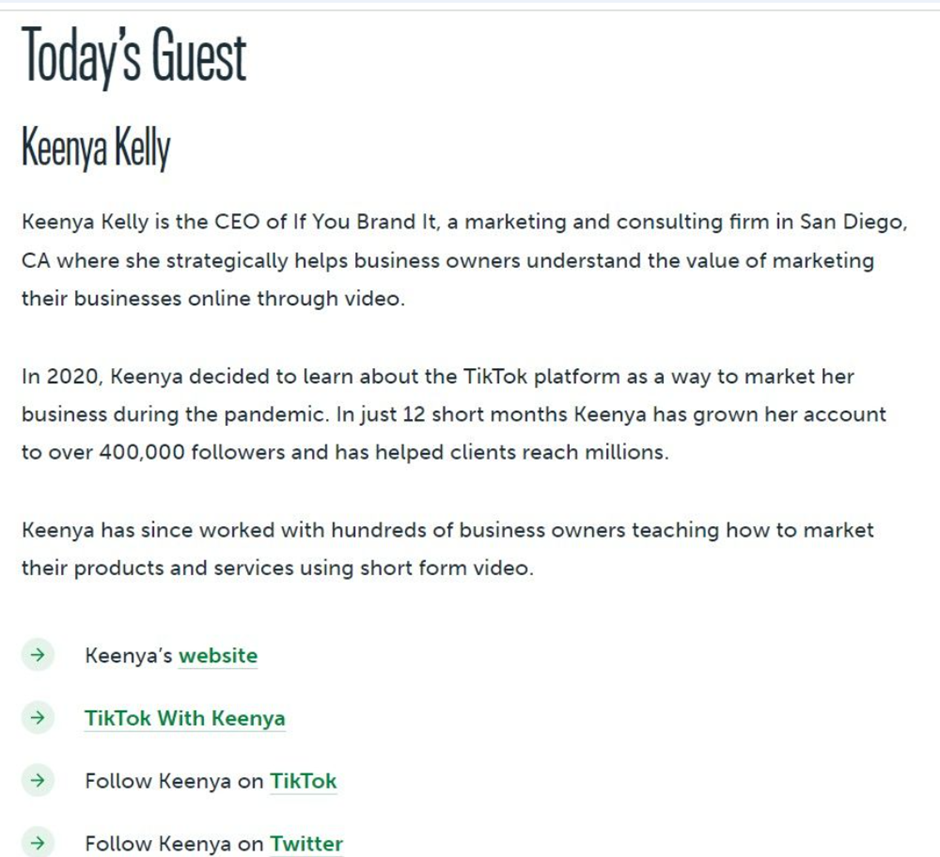
Image Source: Link
7. Resource Pages
Some websites list useful resources on specific topics on their website. If your content is strong, like a tool, checklist, or guide, you can request that they add yours to their website. These kinds of backlinks are powerful when placed on the well-established blogs, .edu sites, etc.
All you need to focus on here is to offer value. If your content is unique, you can contact the site owner and explain why your link should be added here. The request should be respectable tone and in simple form.
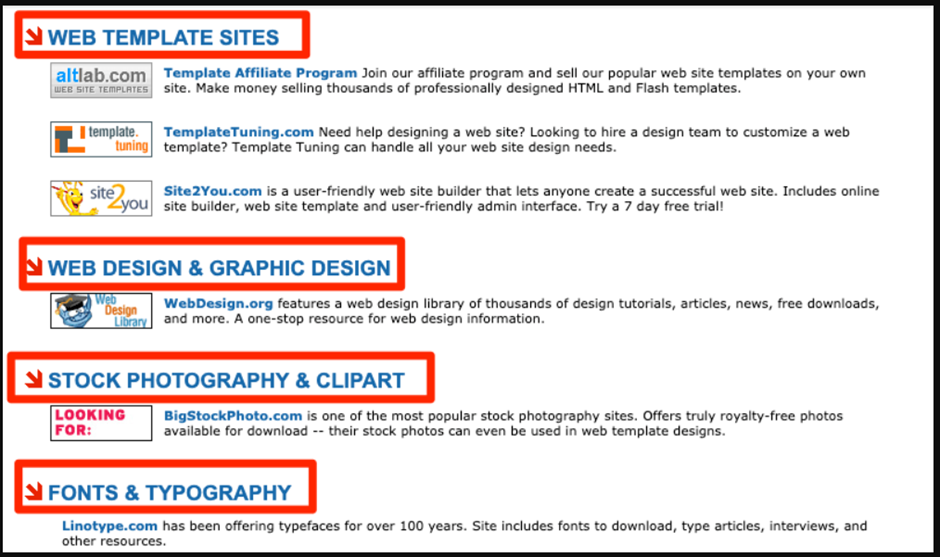
Image Source: Link
B. Neutral or Risky Backlinks (Grey-Hat)
Grey-Hat backlinks are those types that do not carry much SEO value or harmful. Google usually ignore them. If grey-hat backlinks are used properly, they can bring real traffic, brand exposure, and link diversity. Here are some most common types of grey-hat links.
1. Directory Submissions
Directory backlinks usually come from online directories such as Google, Yelp, Tripadvisor, etc.
For example, Tripadvisor listing this Italian restaurant II Ristoro includes a backlink to its website.


This type of link does not boost your SEO like editorial backlinks do. However, they can provide you with valuable referral traffic by improving local SEO results. You need to avoid outdated and spammy directories and choose the known, used by your target audience, and drive your real traffic.
2. Press Releases
Whenever you publish a press release and distribute it via newswire platforms, you may get backlinks from media sites. These links are nofollow and don’t boost your SEO efforts much. However, press releases can bring brand awareness and bring you referral traffic.
You must use it whenever you have something real and valuable to share. Choose high-quality PR sites or pitch your story to a known journalist in your industry.
For example, here Infosys has mentioned that they collaborate with RWE, which is a German multinational energy company, by linking their website.
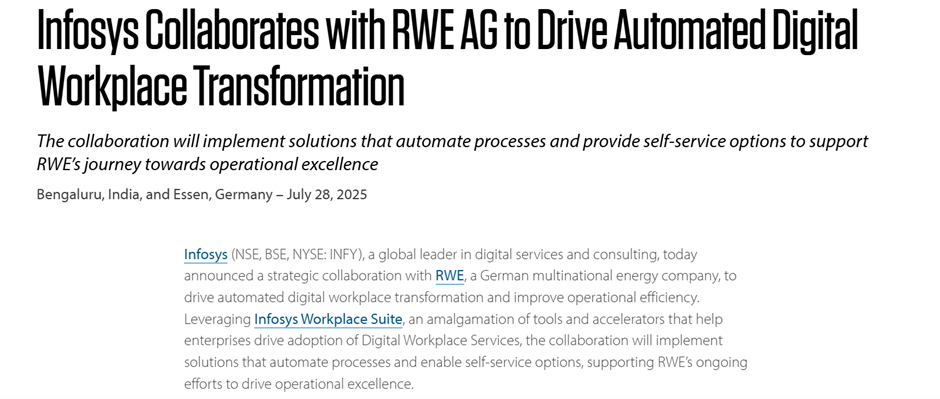
3. Comment Backlinks
Whenever you leave a reply on the blog post, forum, or social media and include your website URL, it is a comment backlink. This backlink is nofollow by default, so it does not directly boost your SEO efforts. However, they can drive referral traffic. Only include links in comments if you provide helpful information that users are likely to appreciate. Avoid generic comments like great post.
When you comment on high-quality blogs or niche-relevant sites, it helps you stay visible in the community.
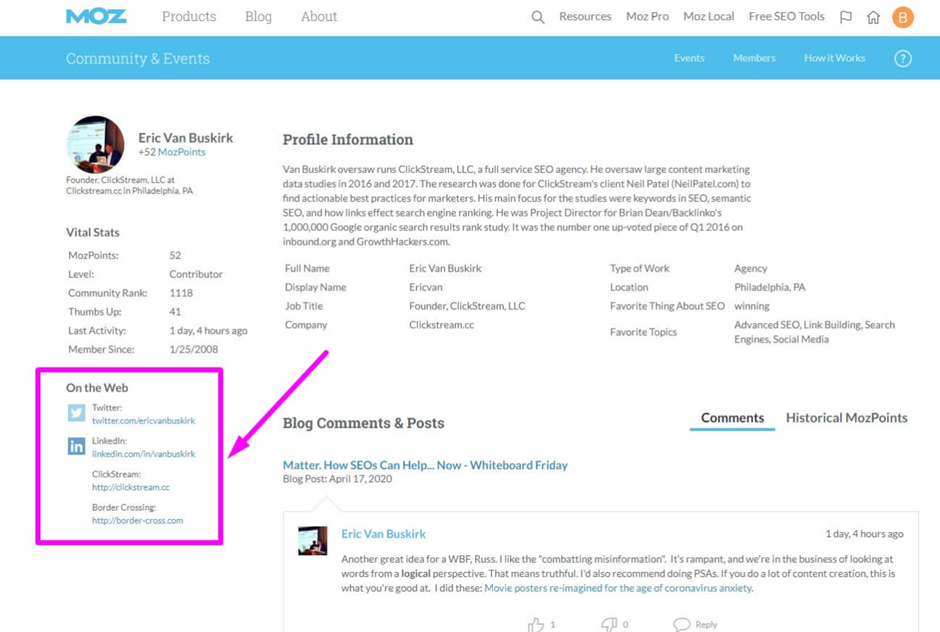
Image Source: Link
4. Business Profile Links
Whenever you create a profile on platforms like Google Business, Yelp, Clutch, or industry directories, you get a link to your website. It is called the business profile link. They are useful in improving local SEO efforts. These links are nofollow, but still add credibility. Ensure you have uploaded consistent details on all platforms because inconsistent details can confuse Google.
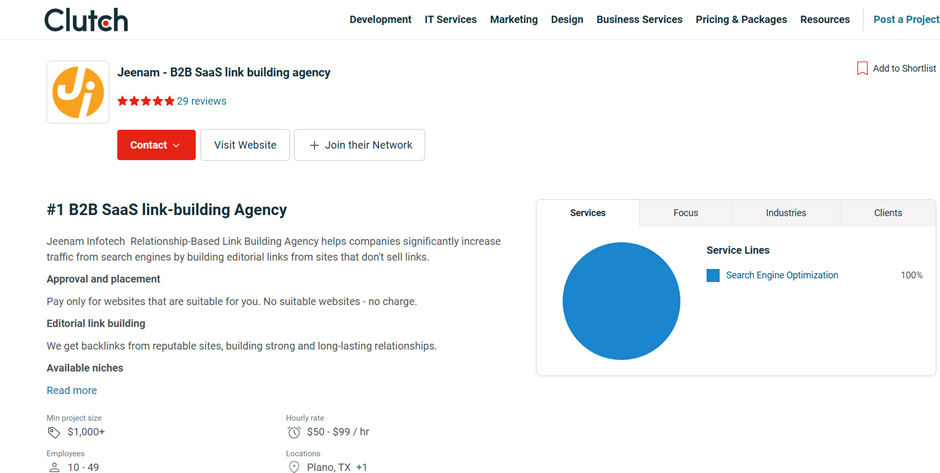
Image Source: Link
5. Social Media Links
These are links from your social media profile pages, like LinkedIn, Twitter, Instagram, or YouTube or author bios. These are nofollows but help in improving branding and trust, and drive traffic.
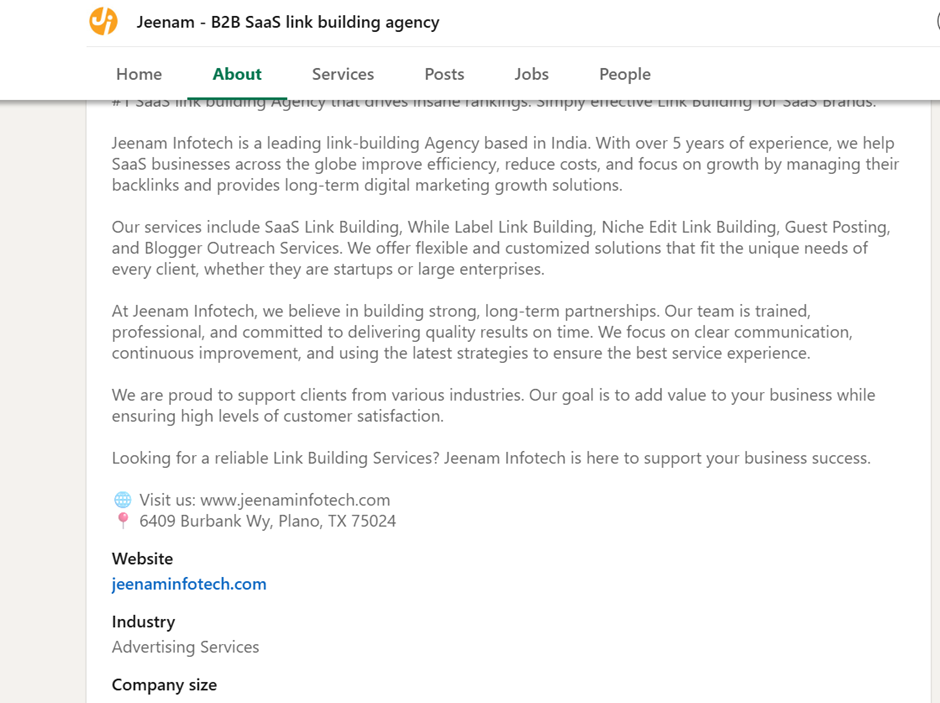
Quick Comparison: Low Risk Vs High Risk Grey-Hat Links
| Backlink Type | Low Risk/Safe | High Risk |
| Directory Submission | Safe to use when submitting to trusted, niche-relevant, high-traffic directories like Yelp | When you submit to outdated, low-quality, or irrelevant directories. |
| Press Releases | When it is issued for actual news/events, and published on the authoritative PR platforms. | Overuse of PR syndication for SEO with no real news value |
| Comment Backlinks | Thoughtful and helpful comments on niche-relevant blogs or forums | Generic or mass comments such as “Nice Post” with links to unrelated sites |
| Business Profile Links | Creating a genuine business profile with accurate and consistent information across platforms | Creating fake or duplicate solely to drop links |
| Social Media Links | When linking from official brand accounts like bios, posts, and about sections | Creating multiple fake profiles or spamming links in comments |
C. Harmful Backlinks (Black-Hat)
Some backlinks can damage your SEO. These links come from shortcuts or shady tactics that violate Google’s rules and are harmful backlinks. These backlinks aim to manipulate search rankings. So, it can hurt performance. Black-Hat backlinks can give you a temporary boost, but usually lead to penalties and, in some cases, even deindexing. You should avoid such types of backlinks if you want to improve your rankings. Here are a few examples of harmful backlinks.
1. Paid dofollow links
Buying backlinks seems tempting as it gives you a quick win. However, if the website is spammy, without real traffic, or exists only to sell links, Google can easily spot it. Such links can give you penalties, or your website ranking can drop. So, instead of paid links, invest in real content or PR.
2. Private Blog Networks and Link Farms
These are a network of websites, but they have only one purpose: to sell backlinks. They don’t have any real content, traffic, author, or purpose. Google can easily find it out. So, if your website is connected to a link farm or PBN, it can give you a manual penalty or even deindex your webpage completely. So, you should always avoid shortcuts like these.
3. Spammy Automated Tools
Some automated tools claim they can build backlinks automatically through blog posts or spinning content. Such tools create low-quality and unreadable articles with links stuffed inside. Google consider it as spam, so it won’t bring traffic and doesn’t build authority. Besides, it can damage reputation. Therefore, you should avoid any such tool or service that promises hundreds of links for cheap.
4. Forum Spam and Blog Spam
Forum spam and blog spam mean posting irrelevant or overly promotional content to increase the search traffic of the website. It is usually done by inserting links or text into comment sections, forums, or other UGC content areas on the website. As in you try to manipulate search engines, it can harm your website’s SEO performance. Therefore, only add backlinks in forums or comments, and include those that provide real value.
Link Building Strategies to Earn Quality Links
If you want to earn quality links, here are a few link-building strategies that you need to follow.
- You should create useful linkable assets like guides, infographics, tools, and research.
You must focus on producing original, high-quality content that helps you get dofollow links from editorial publications.
For example, you can take the example of OpenView Venture Partners. They have done a study on pricing, and as per Semrush, this study has earned 170+ backlinks since its publication, and 147 of them are dofollow.
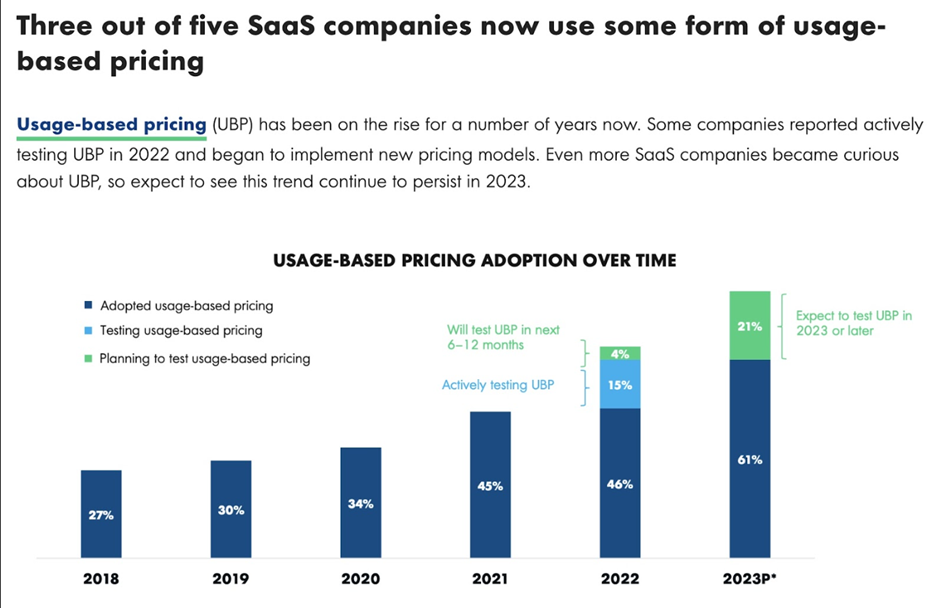
Image Source: Link

Image Source: Link
- You can employ outreach strategies such as email, PR, and influencer collabs.
Email outreach, PR, and influencer collabs can help you earn quality backlinks. It will drive real traffic to your website and boost your SEO rankings.
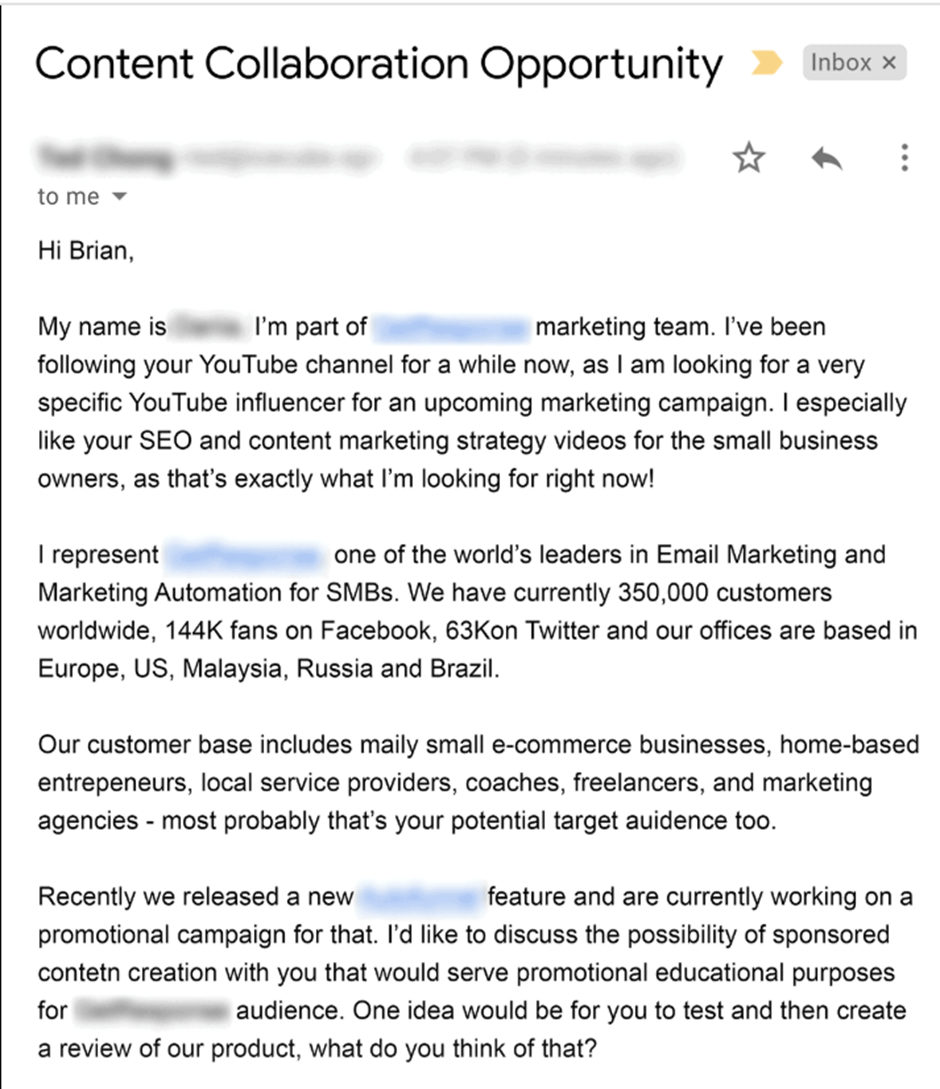
Image Source: Link
- Build a relationship with industry blogs.
Try to know others in your industry who run authoritative websites. Engage on LinkedIn with them and give genuine, valuable comments on their blogs. It gives you an opportunity to earn a natural link opportunity. You can use link-building tools like Semrush or linksman.io to find high-authority websites in your niche and build relationships.
- Repurpose content for backlinks.
From one long-form blog post, you can create infographics, reels, videos, convert them into a podcast, tutorial, and much more. Repurposing content can help you earn quality backlinks as it allows you to cater to the diverse content preferences of audiences.
For example,
SEMrush is a master at effectively doing content repurposing. They published a high-quality blog post on the conversion funnel – ToFu, MoFu, and BoFu
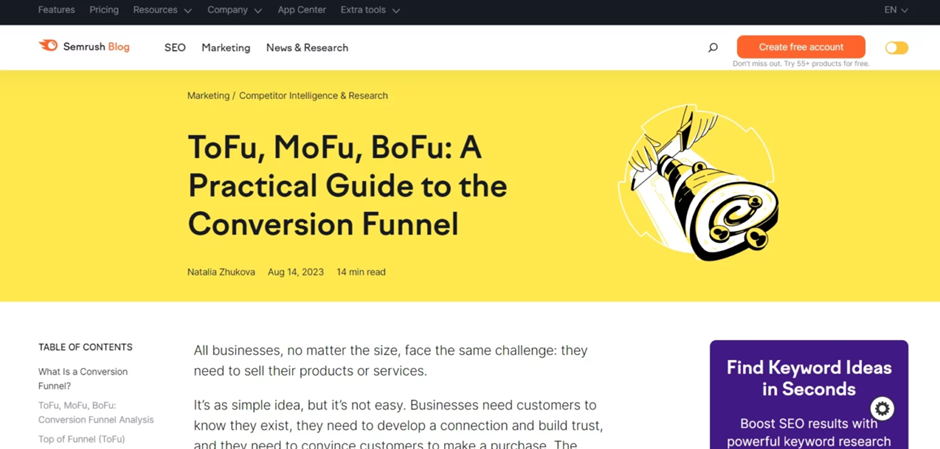
Image Source: Link
Later, they repurpose it by creating a LinkedIn carousel post which includes all the key points from the blog.
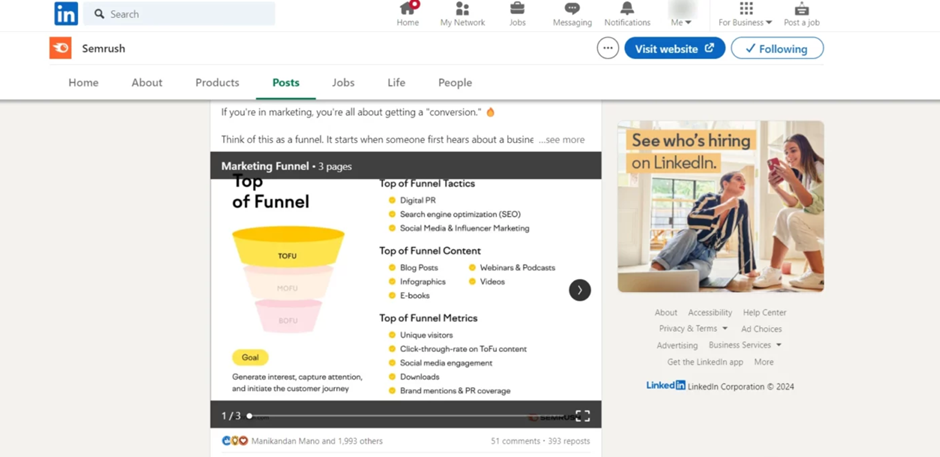
Image Source: Link
How to Audit and Maintain a Healthy Backlink Profile
Once you’ve started building backlinks, start auditing and maintaining them. So, they help your website rank, find you new growth opportunities, and here is how to do it right.
- You can use tools like Google Search Console, Ahrefs, SEMrush, etc., to check how many backlinks you currently have and which pages they point to.
- Regularly monitor new and lost backlinks. If you lose any good backlinks, reach out to them and try to get them back.
- If you find any toxic backlinks which can harm your website, use tools like SEMrush or Moz, identify them and disavow them if required.
- Focus on which one is bringing traffic, guest posts, blogs, resource pages, etc, and double down your strategies on those.
- Ensure your links are using natural and relevant anchor text and are placed in useful content. It affects how much SEO value they pass.
- Focus on quality instead of quantity. Don’t try to build 200 links in 15 days and then stop. Google usually prefer steady and organic growth. So, keep publishing and tracking your progress month by month.
Epilogue – Types of Backlinks
Backlinks are valuable even after the recent Google algorithm updates. However, building the backlink that actually works takes time, effort, and a strategic and ethical approach. Hopefully, by reading this blog, you understood what is the difference between safe, risky, and harmful backlinks and which one you should choose. However, before we sign off, here are a few things that you should keep in mind while building your backlink strategy.
- Focus on quality instead of quantity.
- Always obtain links from reputable and relevant websites.
- Never chase automated or spammy backlinks.
- Avoid shortcuts, as they can harm your website’s credibility.
- If you notice any toxic link, clean it up immediately.
- Optimize your link-building strategy for long-term SEO success.
- To strengthen your backlink profile, regularly audit it.
Do you need help auditing your backlink profile? Get in touch with us today!
FAQs
1. What are toxic backlinks?
Toxic backlinks are those that come from low-quality or spammy sites. If it is one or two, Google may ignore it, but if your website has too many toxic backlinks, it can harm your rankings and even trigger manual penalties. You must use tools to identify and disavow them if required.
2. Are nofollow backlinks valuable for SEO?
Yes, nofollow backlinks are valuable for SEO. They don’t directly boost search engine rankings like dofollow links. However, they can drive referral traffic, increase brand awareness, and help you build a more natural and diverse link profile.
3. How often should I check my backlink profile?
You should check your backlink profile at least once a month to ensure it is not harming your SEO efforts. The ideal frequency depends on the website’s size, industry, and link-building activity.
| Small websites and blogs | Every 1-2 months |
| Medium-sized businesses | Every 2 to 4 weeks |
| Large websites and eCommerce websites | Every week or bi-weekly |
| New websites | Every three months |
| Established sites – low-competition niche | Every 6 to 12 months |
| High competition industries | Every 2 to 4 months |
4. Are all paid links considered harmful?
Not all paid links are harmful, but many of them are. Buying or selling links to manipulate search ranking is against Google’s guidelines.
5. How do I disavow backlinks in Google Search Console?
If you want to disavow backlinks in Google Search Console, follow these steps.
- Create a text file.
- List the URLs or domains you want to disavow.
- List URL in this format – domain:example.com
Upload this text file through the disavow links tool in Google Search Console for the specific property. Google will ignore these backlinks to your site.
